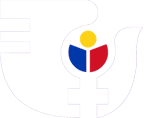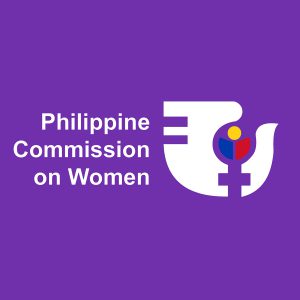Peace and Security Sector
Women in conflict-affected areas experience increased burdens regarding their reproductive and productive roles. In situations of armed conflict, the task of care-giving becomes heavier due to limited supply and access to necessities such as food, clean water, and clothes; lack of facilities for cooking, washing, or bathing; and increased vulnerability of family members, particularly children, and older persons, to illnesses.
In recent years, there has been an increase in the participation of women in governance and peace processes at the national level. Women participate and lead the implementation of closure agreements and peace negotiations as panel members or as part of the panel secretariat. The Philippines is the first country to have had a female chief negotiator who signed a final peace accord when the government entered into a peace agreement with the Moro Islamic Liberation Front. Nonetheless, tremendous efforts should be exerted to empower women on the ground to look after themselves and their communities and participate in local conflict resolution, peacebuilding, and post-conflict rehabilitation mechanisms (e.g., the Lupong Tagapamayapa). The participation and involvement of women, particularly those on the ground, are essential. Because of their differentiated experience of conflict and its impact, women offer different perspectives on political, economic, and socio-cultural issues, strategies on promoting and protecting human rights and welfare, and solutions to end conflict and attain lasting peace.
In 2010, the Philippine government crafted its first National Action Plan on Women, Peace, and Security (NAPWPS) in cooperation with civil society. This Action Plan was updated to harmonize with the Magna Carta of Women (MCW) and to address emerging issues. The Philippine NAPWPS 2017-2022 is a step forward from its predecessor. It adopted a framework that recognizes women’s contributions to conflict transformation and addresses their intersecting vulnerabilities in armed conflict.
The third generation of the country’s NAP includes the context of non-international armed conflict as stipulated in the CEDAW General Recommendation 30. The NAPWPS 2017-2022 also complements other legal mandates that promote gender equality and empowerment of women and girls in conflict situations, such as the Philippine Development Plan Chapters 17: Just and Lasting Peace and Chapter 18: Ensuring Security, Public Order, and Safety. It is the basis for issuing the Joint Memorandum Circular 2014-01 on the “Integration of Women, Peace, and Security Programs, Activities, and Projects in the Annual GAD Plans and Budgets and GAD Accomplishment Reports.
Priority Sectoral Gender Issues
Due to their complex and historical roots, the persistence of long-standing armed conflicts has been a significant development challenge limiting women and men. Recent studies show that women suffer differently during and after an armed conflict, given their roles and the conventional cultural expectations. A woman’s burden in times of conflict is not just her own, but as caregivers of their family and community. Furthermore, situations in conflict-affected and vulnerable areas also show that women are systematically exposed to different forms of gender-based violence such as rape, sexual harassment, physical abuse, and others. Women’s access to justice and protection is limited as it is not usually prioritized.
Women’s low representation and participation in decision-making, including Track 1 (formal peace process), Track 2 & 3 (informal and grassroots), and officials and personnel in the police and military service, among others
Women’s participation and involvement in decision-making are essential to address the various gender issues affecting women in conflict. The UN Security Council Resolution 1325 also reaffirmed the vital role of women in the prevention and resolution of conflicts and peacebuilding. It stressed the importance of their equal participation and full involvement in all efforts to maintain and promote peace and security and the need to increase their role in decision-making. However, according to the current data from the agencies under the peace and security sector, it has been evident that the representation of women in the decision-making tables is deficient. Although women’s presence in the security sector has increased in the last two decades, women continue to be under-represented and often invisible in the sector.
Lack of gender-responsive billeting and quartering facilities for male and female uniformed and non-uniformed personnel
Despite the provision in the MCW that women in the military, police, and similar services are provided with decent billet facilities and quartering, separated from the men, regardless of the location or type of assignment, this gender issue is still very evident and is exacerbated during the COVID-19 pandemic since the security sector was mobilized for the response.1
There is inadequate availability of well-fitting personal protective equipment for female personnel, including uniforms, firearms, among others
The MCW also states that women in the military, police, and similar services should be provided with well-fitting personal protective equipment and other operational equipment to ensure their safety while performing their duties. Unfortunately, during the Sectoral Consultation with Peace and Security sector representatives, it has been raised that there is inadequate availability of well-fitting personal protective equipment for female personnel, including uniforms, firearms, among others.
Women, girls, and children in conflict-affected and complex emergency communities are highly vulnerable to sexual and gender-based violence, exploitation, and other forms of discrimination
Women and girls in conflict-affected and conflict-vulnerable communities become more susceptible to various forms of sexual and gender-based violence, such as sexual harassment, rape, trafficking in person, prostitution, and domestic violence. Those living in crowded evacuation centers have limited privacy and are, thus, more exposed to gender-based violence. Internal displacement and the lack of sustained means of livelihood further increase the risk of women and children to exploitation, abuse, and other forms of discrimination.
Cited Source:
1 PCW and UN Women Gender Mapping of Peace and Security Frontliners during the COVID-19 Pandemic. June 2021.

